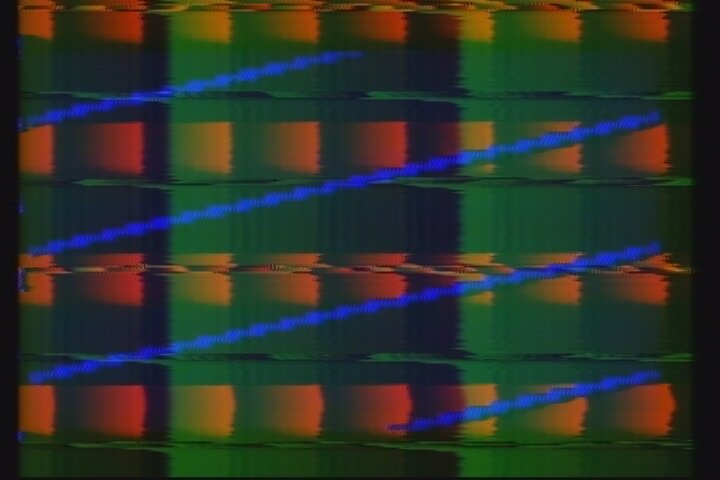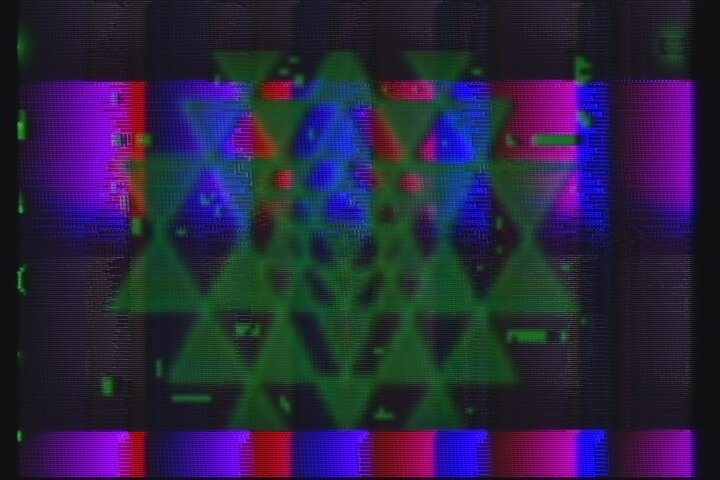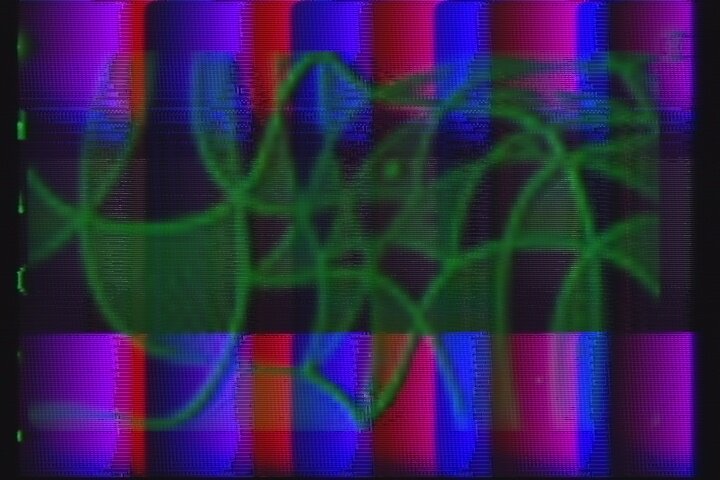I have achieved a lot more information and understanding on how audio reactivity works when patching the 3Trins. The waveforms from each CV input can trigger a cut-off of the colour channel oscillators which can follow the shape of the imported video shapes. This has good potential for achieving reactive linear audio/video accompaniment - and, depending on the location of the chain of the cv input, also allows for the design of delayed or non-congruent video accompaniment (much more interesting).
I managed to record a good sounding piece last night, but encountered some significant problems with the recorded format. Since they are just experiments, the system I developed had very little monitoring and levelling control and - unfortunately - recorded most audio on the a single channel of the stereo image. So, this first piece is only a good bit of fun and improvisation, but not presentable.
I spent the morning rerouting the audio and video through an interface and mixer. I also received an HDMI to Composite AV adapter today, after much deliberation as to a more flexible analogue video input scenario. This system will allow the computer to generate images and feed them back into the video synth system - all the while able to reroute internal audio signals. This allows for a reciprocal system to be experimented with.
The first example is simply setting a digital oscillator to both visual systems (3Trins and PV) and experimenting with the linearity of a single audio-reactive system. It seems to work though the phasing particulars of each system need to be calibrated. Also, the apparent increased fluidity of the image in an analogue system seems no comparison with the rich and flowing output of the 3Trins. One can compliment the other, however, and there is a lot to experiment with.
The second experiment has to do with a single PV system broadcasting visuals and sound into the cv- input of the 3Trins. This works very well, and while this is not yet so reactive (the audio to the 3Trins) it is the best way forward to develop a more reciprocal system.








